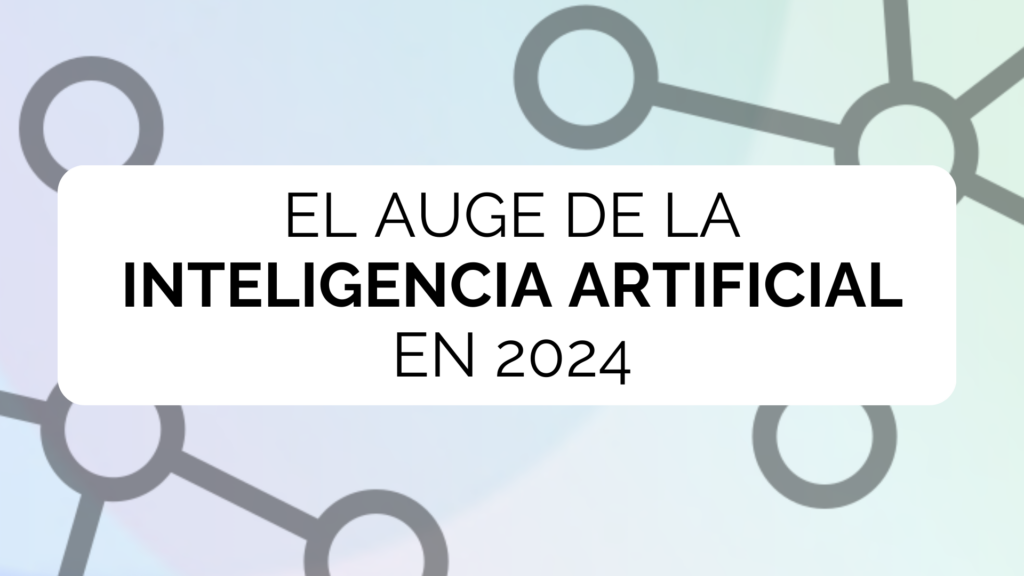The rise of Artificial Intelligence in 2024

On previous occasions in this blog, we have talked about the importance of Artificial Intelligence in Email Marketing. As we all know, artificial intelligence has gone from being an experimental tool to becoming an essential pillar in the world of digital marketing..
In 2024, AI applications in email marketing and marketing automation have taken on new roles, improving both the efficiency of campaigns and the personalisation of customer interactions. Below, let's take a look at the main areas where AI is excelling this year and how it is transforming these disciplines.
1. Content optimisation with AI
One of the biggest trends of 2024 is the use of AI to optimise content in email marketing campaigns. AI algorithms can analyse large volumes of user behaviour data to suggest subject lines, CTAs and content that maximise open and conversion rates.
PersonalisationAI enables companies to deliver highly personalised content in real time, tailored to the individual preferences of recipients. This not only increases the engagementIt also improves the relevance of messages, which increases the likelihood of conversion.
Automatic content generationTools that perform automatic content generation, such as ChatGPT, allow marketers to help each other generate email content that is aligned with the interests of each customer. This saves teams valuable time that can be used for another task.
2. Advanced audience targeting
Audience segmentation is not just a matter of grouping customers into categories. In 2024, AI allows us to create much more complex targeting based on user behaviour, previous interaction with the brand and other contextual factors.
Predictive segmentationArtificial Intelligence can analyse historical behaviour patterns to predict which user segment is most likely to interact with a campaign. Therefore, this helps to reduce the sending of irrelevant emails and to focus campaigns on those users who can provide the most value.
Automation of workflowsIn marketing automation, AI can help set up fully automated workflows that adapt and evolve based on user responses. This allows marketers to create more dynamic campaigns, triggered by real-time actions.
3. Intelligent automated deliveries
One of the major advances in email marketing is the ability to automate the sending of emails at the optimal time (STO) for each user.
Send Time Optimization (STO)AI can determine when is the best time to send an email to each recipient, based on their previous email interaction history. This has been shown to significantly improve open and click-through rates, as emails are delivered when the user is most receptive.
A/B TestingA/B testing, an essential practice for optimising email campaigns, has become much more efficient with AI. Instead of lengthy manual testing, AI can run multiple tests simultaneously, adjusting the approach in real time and continuously learning which options work best.
4. Predictive analytics and modelling Machine Learning
Another powerful application of AI in 2024 is the prediction of customer behaviour. Machine learning models make it possible to anticipate more accurately how users will respond to certain messages or campaigns.
Dropout and retention predictionAI enables marketers to identify patterns that predict churn, allowing them to send targeted communications to retain those users before it's too late.
Modelling of the Customer Lifetime Value (CLV)AI can also calculate a customer's long-term value (CLV), helping brands to focus on users with the greatest potential to generate revenue over time.
5. Artificial Intelligence linked to emotions
It's hard to believe, but AI in 2024 is also helping brands interpret emotional state, based not only on behaviour but also on users' emotions.
Emotional responsesAI can analyse responses to emails or surveys to detect changes in the emotional tone of users, allowing brands to adjust their communication accordingly and maintain a closer relationship with their customers.
ExampleIf a brand receives several customer mailings with words that AI associates with negative emotions (such as "dissatisfied", "disappointed"), it can adjust its future communication to address these issues.
Emotionally personalised mailings: Sentiment analysis can be used to personalise mailings based not only on the user's behaviour, but also on their emotions, providing messages that resonate more deeply with their current feelings.
ExampleIf the AI detects a negative tone or low engagement, the brand can send emails designed to motivate or reactivate the user, such as offering incentives, tips or more emotional messages that connect with the customer's current state.
If this post has interested you, next week we are going to present different applications that are of great value in each of the points we have explained. So, don't forget to subscribe to our newsletter!
